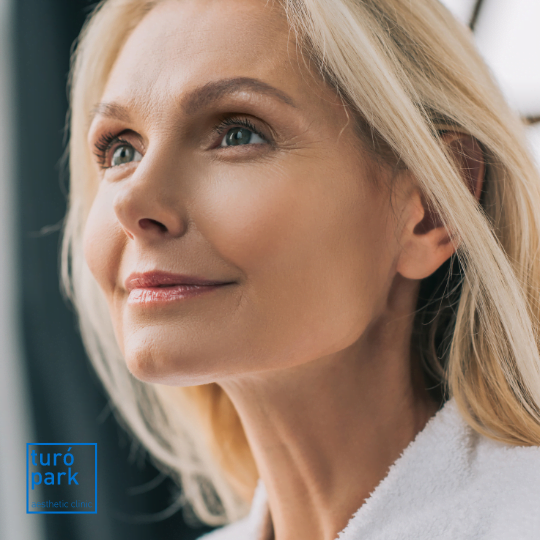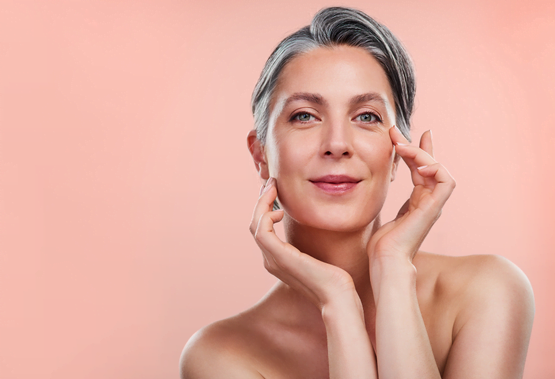Do you want to erase your age spots with cosmetic medicine?
Age spots are very common and are one of the main reasons for consulting aesthetic medicine and dermatology practices. They are however most often benign, but they can be a source of cocern, in particular when they are located on the face.
If you have brown spots on your face, décolleté or hands and would like to reduce them, do not hesitate to make an appointment with one of our specialists in aesthetic medicine.
At Turó Park Clinics, we are equipped with a Nordlys™ device, allowing us to treat 21 different indications, including brown spots, using both laser and intense pulsed light.
Treatment info
| Duration of the treatment | 30 min |
|---|---|
| Recovery | 2-3 weeks |
| Results | Long-lasting |
| Effects | After a few days |
| Anestesia | Possibly EMLA cream |
| Price | From €200 |
Speed up your treatment!
To make an appointment or speak with one of our team members, please contact us using the options below.

Age spots: what are they?
Age spots are hyperpigmentation of the skin, i.e. an excessive production of melanin.
As a reminder, melanin is a dark brown pigment responsible for skin colour. The higher an individual's melanin level, the darker their skin.
The different types of age spots
Lentigos are brown spots that can be found on the skin, nails or mucous membranes. Most often, they concern areas exposed to the sun: the face, neck, décolleté, back of the hands, forearms, shoulders, back.
Lentigos are also known as "age spots" or "sun spots".
Melasma is a pigmentation of the cheeks, cheekbones, forehead and upper lip, which can occur during pregnancy, hence the name "pregnancy mask".
What causes age spots?
Many internal and external factors can explain the appearance of age spots on the skin:
- UV exposure
- Aging
- Exposure to pollution
- Pregnancy
- Hormonal imbalances
- Genetic predisposition
It is also important to note that hyperpigmentation marks generally affect darker skin types more than lighter ones, as skin pigmentation is stronger in darker skin types.
Remove your dark spots permanently.
The aesthetic medicine specialists at Turó Park Clinics offer you a first consultation to find out which options best suit your needs and expectations.

How to remove age spots?
Laser or pulsed light (IPL)
Lasers are very effective in erasing these pigment spots in a few sessions.
The laser depigmentation technique is very popular because it allows the pigmented spot to be targeted exactly without going beyond the periphery of the spot.
Be careful, however, as laser pigmentation requires some precautions to be taken, the most important being to avoid exposure to the sun before, during and after the treatment. Laser sessions should therefore be carried out in winter.
At Turó Park Clinics we are equipped with a Nordlys™ device, which is particularly effective on sun or age spots. Do not hesitate to make an appointment with one of our specialist doctors for a free initial consultation.
Other methods to remove age spots
Cryotherapy
Cryotherapy is a technique that uses liquid nitrogen at -190° to produce a thermal burn that destroys skin cells.
Best known for its use in the treatment of warts, it can also treat hyperpigmentation.
Generally, only one or two sessions are needed to remove age spots with cryotherapy.
Photodynamic therapy
Photodynamic therapy is a medical treatment that combines an active substance with light irradiation of the skin. The light source acts as an activator of the photosensitising substance which, once activated, generates free radicals, causing damage to the tissues in which it has accumulated.
It should be noted that the session can sometimes be painful depending on the areas treated and that it is important not to expose yourself to the sun after a session of photodynamic therapy.
The depigmenting peel
The depigmenting peel contains active ingredients that regulate the production of melanin, thus reducing spots and restoring the skin's radiance. It is indicated for all types of pigmentation, epidermal (age spots) or dermal (melasma, post-inflammatory pigmentation, etc.).
The depigmenting peel consists of applying a product composed of a combination of depigmenting agents directly onto the skin. The product must remain on the face for between 6 and 12 hours. Patients are therefore allowed to go home with the peel and rinse it off at home.
After a peel, the skin tends to become hot and red. These symptoms usually disappear after a few hours.
Our laser and pulsed light doctors



